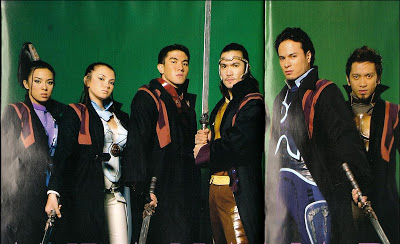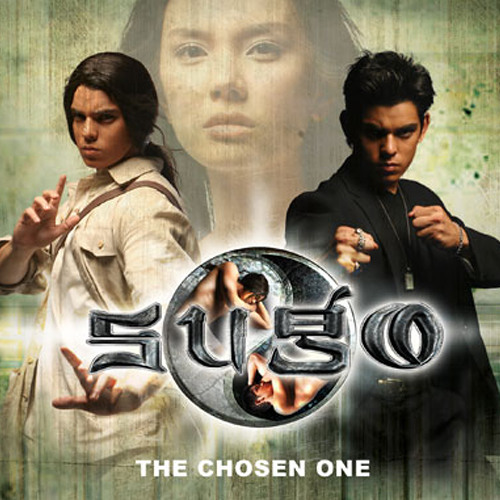Because telenovelas have been around for a long time, it is inevitable that the genre would become stale without innovation. To keep your telenovela interesting and your audience hooked, here are some twists you can add to your telenovela.
HYBRID TELENOVELA
Sometimes, the best way to keep the audience hooked to your telenovela is to mix it with a completely different genre. Here are some possible combinations.
Advocacy serye – Make your lead character someone who has a disability. This is the selling point of Budoy.

Anime serye – Copy the character concept of an anime and put it in a telenovela, but twist it by changing something about that person. For example, put someone with a split personality disorder (like Kenshin Himura from Samurai X) in a telenovela, turn your character into a woman, and call the show Rhodora X.
Comic book serye – Make some of your characters copies of well-known comic book characters. The most blatant examples are Darna (copied from Wonder Woman) and Alyas Robin Hood (copied from Green Arrow). If you want something closer to home, use characters from actual Filipino comics like Tinay Pinay and Combatron in Funny Komiks.

Fantaserye – Give some of the characters magic powers. Make them use their powers to solve everyday problems or make them use their powers to save the world. As a side note, a lot of people think that Mulawin (2004) was the first fantaserye, but really, the first fantaserye was Okay Ka Fairy Ko which premiered back in the 1980s.
Martial arts serye – Make your telenovela about a specific martial art. Or even better, make your telenovela a continuation of a Filipino martial arts movie from the 1980s (examples are Kamagong starring Lito Lapid that features the art of Arnis, or Kid, Huwag Kang Susuko starring Richard Gomez that features the art of Taekwondo) that shows the lives of the original characters at present. This is exactly what happened with The Karate Kid (1984) and Cobra Kai (2018).


Tokusatsu serye – Make your characters part of an intergalactic policing organization that protects the earth from invading forces that want to rule or destroy it. Of course, I’m talking about Zaido here.

Zombie apocalypse serye – Set your telenovela in a zombie apocalypse. What you get when you mix a telenovela with The Walking Dead is The Cure.
VERBAL CONFRONTATION (ONE LINERS / COMEBACKS)
Your characters must have catchy one-liners and comebacks.
Examples of one liners:
“Masanay ka nang kumain ng kangkong. Dahil pagkatapos ko sa iyo, sa kangkungan ka pupulutin.”
“I am Romina Mondragon. I will rise from the ashes.”

Examples of comebacks:
PERSON A: Marami ka pang kakaining bigas.
PERSON B: Hindi ako kumakain ng bigas. Sinasaing ko muna para maging kanin! Ikaw pala, bigas pa lang, kinakain mo na.
PERSON A: I know you want me.
PERSON B: With all due respect, PLEASE, DO NOT FLATTER YOURSELF.
WARNING: Sometimes, the one-liner can backfire if it has a dual meaning. In Budoy, the catchphrase of the title character was: “Gusto mo BJ?” Seriously, read that line again and think about what possible meanings it has.
A comeback can also backfire if it’s so cheesy and nonsensical that it becomes laughable. “Aaminin ko, saging lang kami! Pero maghanap ka ng puno, sa buong Pilipinas, saging lang ang may puso! SAGING LANG ANG MAY PUSO!”
PHYSICAL CONFRONTATION (FIGHT SCENES)
Beyond verbal confrontations, there must also be physical confrontations in your telenovela.
The male lead must be protected by plot armor and therefore cannot be killed by goons armed with knives, guns, grenades, vehicles, etc. He can still get injured, though, and must cringe and whine when the female lead treats his wounds.
When the inevitable confrontation between the female lead and the evil female lead happens, the most common techniques will be a slap (sampal) and hair pull (sabunot). However, it’s the 2020s already, and women who practice martial arts are commonplace. The best way to twist this trend is to have the two ladies fight each other with more class and style. In other words, have them fight using actual martial arts techniques. You can have them fight each other standing up (use techniques from karate, taekwondo, or kickboxing here) or if you can afford a good fight choreographer have them fight even on the ground (use techniques from jiu-jitsu here).


If it’s a fantaserye, you can have different characters skilled in different martial arts styles. You can have them fight using the well-known styles like karate, taekwondo, muay thai, wushu, kali, or some of the more exotic/esoteric ones like Yaw-Yan, Capoeira, Penjak Silat. This was already done in Pintados. If you really want to integrate it into the plot, have the characters’ fighting style be a reflection of their personality. Have the gentle, compassionate hero practice an “internal” art and the brash, arrogant, anti-hero practice an “external” art. This was already done in the fantaserye Sugo.

TECHNOLOGY
Use technology to advance the plot. For example, the evil female lead gets bashed because a video of her bullying someone went viral (this was done in Kadenang Ginto). Or, have the female lead be cyberbullied by the evil female lead and her posse.
POSSIBLE STORYLINES FOR SHOWS WITH MULTIPLE SEASONS
OPTION 1
If the first season of your show focuses on how much of an evil female lead your main character is, you can end it through one of the three ways an evil female lead can gain redemption (refer to How to Write Telenovelas Part 1). Then the second season of your show can focus on your main character’s path to redemption.

OPTION 2
If the first season of your show focuses on a disaster (typhoon, earthquake) and how it affected a family, the second season of your show can focus on the family’s attempt to reunite and rebuild their lives.
OPTION 3
If the first season of your show focuses on the abuse your female lead gets at the hands of the female lead, the second season of your show can focus on how the female lead will avenge herself.

POSSIBLE STORYLINE FOR SHOWS WITH MULTIPLE PERSPECTIVES
OPTION 1
Have your show take place in the past and in the present. The past shows your main character as the evil female lead (played by a younger actress) being abusive and hurtful to everyone around her. The present shows the same character (played by an older actress) as the “good” female lead being helpful to everyone around her, but at the same time being stalked and targeted by someone from the past. At the end of the series, show an event in the past that forced your character to realize the error of her ways and made her change, then show in the present a confrontation between her and her stalker who was also caught in the past event and wants revenge.
OPTION 2
Have two characters be played by the same actor/actress. You can either have the actor/actress play a good character and an evil character (this was done in Sugo) or a good twin and an evil twin (this was done in Saan Ka Man Naroroon). You can have the evil character get plastic surgery so she can have the face of the good character (I forgot which telenovela did this, but the evil character’s name was Olga). You can have the main actor play two good guys sharing the same body – one is a normal person and the other is a superpowered entity. This was done in Captain Barbell starring Richard Gutierrez, Darna starring Angel Locsin in 2005 and Marian Rivera in 2009, and for those old enough to remember, in Computer Man starring Eric Quizon back in the 1980s. The trick is to make sure that the two characters are different from each other, meaning one character is not just a fake or even a split personality, but an independent entity.

AUDIENCE PARTICIPATION
Thanks to the power of the Internet, you can give the audience the power to determine how your telenovela will play out. With polls, you can let them decide to let a character die or survive. Even better, you can let them decide who the lead will end up with if there is a love triangle in the show.

With comments on fan pages, you have an idea how much heat your villains are getting. You can also get inspiration from fans on what should happen to the characters.
With youtube, you can invite your viewers to submit a reaction video or a parody video of a scene from the most recent episodes of your show.
JUMPING THE SHARK
These are warning signs that your show is already past its prime and may have to be ended soon.

- SAME CHARACTER, DIFFERENT ACTOR – Replacing a cast member with another actor to play the same role, in an attempt to retain the character.
- EXIT, STAGE LEFT – Connected to #1, this could mean that the show is already so bad that one or more of the actors already want to leave it.
- DEATH – A very important and irreplaceable cast member dies in real life.
- BEST OF LUCK IN YOUR FUTURE ENDEAVORS – A popular cast member gets fired because he/she is difficult to work with.
- WE LIKE TO MOVE IT, MOVE IT – Moving the series to another location. Actually, this can work, but when it doesn’t, it can sink your show.
- SPECIAL GUEST STAR – A guest star (youtube sensation, gameshow winner, etc.) joins the show for an episode playing themselves or a contrived character.
- BIRTH – A baby is added to the cast, usually to accommodate one of the actresses’ real-life pregnancy. You will have to adjust your plot to make room for the pregnancy, and some scenes/elements will feel contrived or out of place.
- NEW KID IN TOWN – A new young character is added to the cast. This is to replace certain characters in the show played by child actors/actresses whose actors/actresses have grown up.
- CROSSOVER – In one episode, characters from one series are placed in another series. The danger here is that the characters from one series or the other will not have enough screen time or will be reduced to spectators, thereby unduly taking the focus away from them.
- NOTHING BUT A SECOND RATE TRYING HARD COPYCAT – An entire series is made to copy the successful series of a rival network. Like the name suggests, the network that creates the imitation series comes off as a second rate trying hard copycat (an example is ABS CBN’s Pastillas Girl whom that network tried to include in their show to challenge GMA’s Kalye Serye back in 2015). Sometimes, it can work if one network is making a sincere parody of another network’s show (an example is GMA’s Marinara which spoofed ABS CBN’s Marina and arguably became more successful).
This is the last entry in the “How to Write a Telenovela” series under the authorship of John Paul Lama, who has recently resigned from RareJob. Other writers are welcome to submit their scribbles and continue the series.




